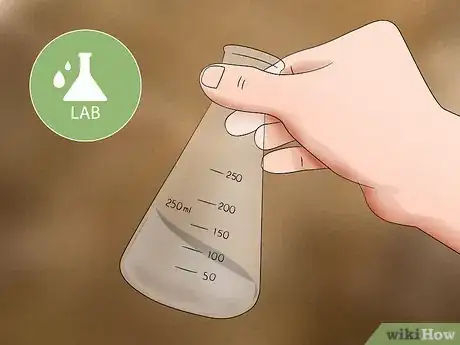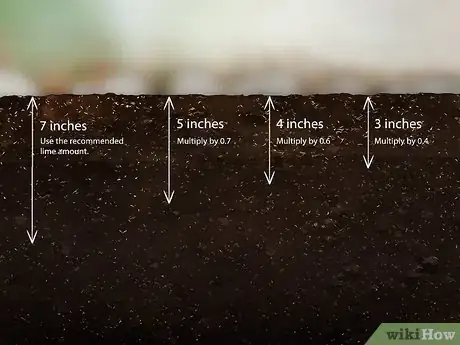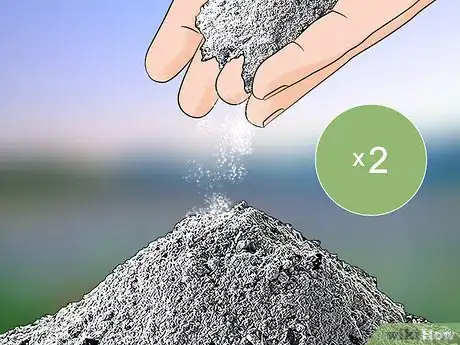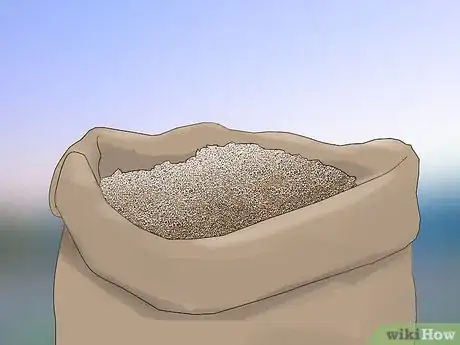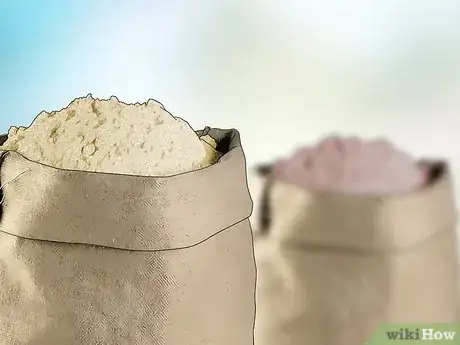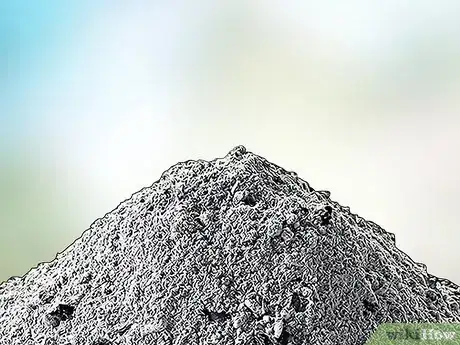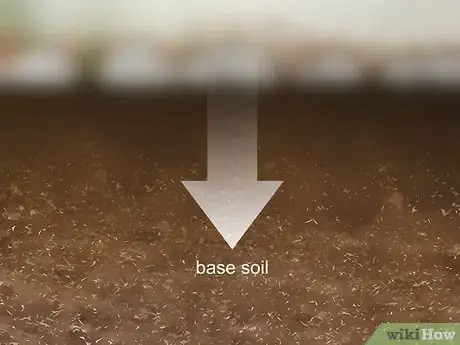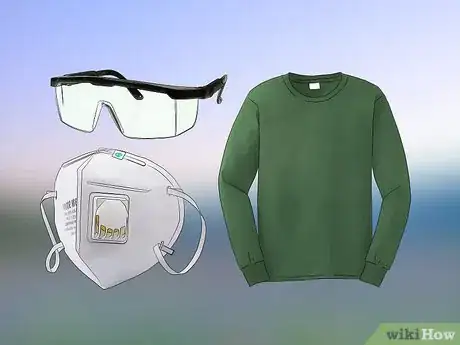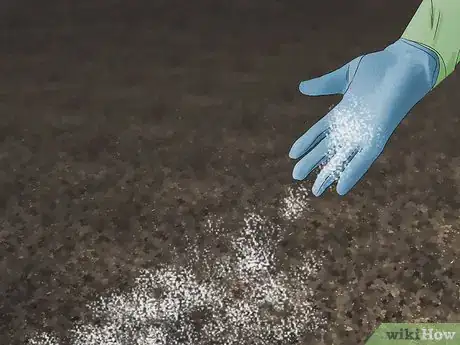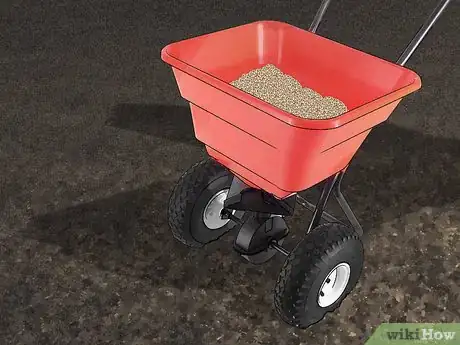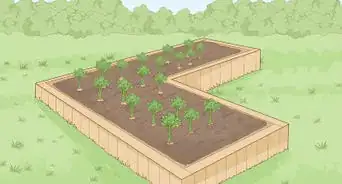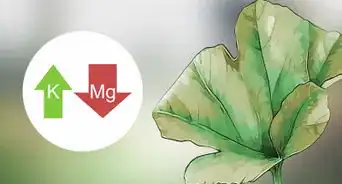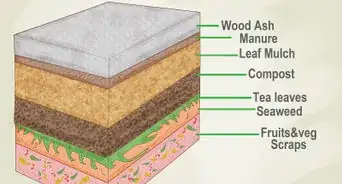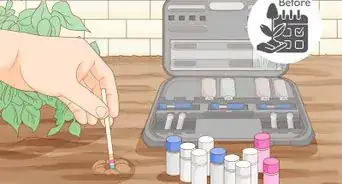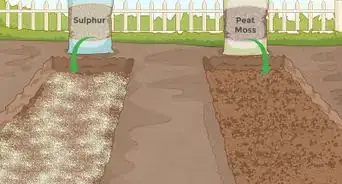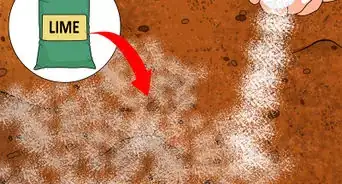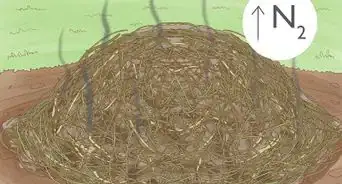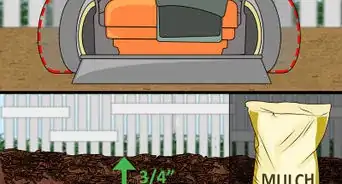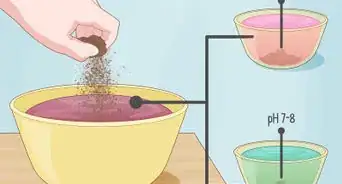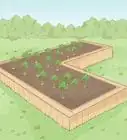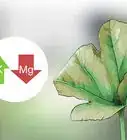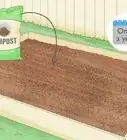This article was co-authored by Lauren Kurtz. Lauren Kurtz is a Naturalist and Horticultural Specialist. Lauren has worked for Aurora, Colorado managing the Water-Wise Garden at Aurora Municipal Center for the Water Conservation Department. She earned a BA in Environmental and Sustainability Studies from Western Michigan University in 2014.
There are 8 references cited in this article, which can be found at the bottom of the page.
This article has been viewed 13,486 times.
If your soil is too low on the pH scale, that means it is too acidic. A simple soil test kit will help you determine this, and if you use one you send off to a lab, it will tell you how much liming agent you need to add to the soil to make it less acidic. A liming agent increases the pH of the soil, making it more neutral or alkaline. Once you know how much you need to add, pick the best liming agent for your needs and then apply it to the soil.
Steps
Determining How Much Product You Need
-
1Perform a soil test to determine the exact pH level of the soil. If you haven't already, you need to get a soil test done. You can test it yourself, but if you send a sample of your soil into a lab, they can recommend how much lime or ash you need to add to your soil to amend it. Keep in mind that you want to amend the soil at least 2-3 months before you plant in the spring.[1]
- Typically, you want your soil to be 6.5-7.0 on the pH scale for most crops, though it can differ depending on your area and the crop you're planting. If your soil is at 5.0, that's 10 times more acidic than 6.0.
- You can buy a kit at your home improvement store, or most local agriculture extension centers have soil kits.
-
2Look for the amount of product that your soil test recommends. The soil test should list how much lime you will need to add to your soil, as long as you sent your soil off to a lab. In the U.S., the amount will likely be listed in pounds/acre, though it might also be listed in pounds/1,000 sq ft.[2]
- If the number is in pounds/acre, divide it by 43.5 to get pounds per 1,000 square feet.
Advertisement -
3Adjust the number based on how deep you plan to till. The number you're given is based on the assumption that you will till 7 inches (18 cm) down in the soil to mix in the lime. However, if you plan to only dig 4 inches (10 cm), you need to reduce the amount you're adding.[3]
- For 3 inches (7.6 cm), multiply the number by 0.4. For 4 inches (10 cm), use 0.6 as the multiplier and use 0.7 for 5 inches (13 cm).
- For instance, if the equation tells you to add 60 pounds per 1,000 square feet, multiply that number by 0.4 if you're only digging 4 inches (10 cm) to get 24 pounds of lime.
- Soil should be tested every 2-3 growing seasons to see if it maintains the pH levels you want.
- Make sure you do not overtreat the soil or else the pH will be more difficult to balance.
-
4Multiply times 2 if you want to apply ash instead of lime. Hardwood ash can also raise the pH level of the soil due to the calcium it contains. However, it contains about half the calcium that lime does, so you need to apply twice as much.[4]
- So if you've determined you need to use 24 pounds (11 kg) of lime, multiply it by 2 to make 48 pounds (22 kg) if you plan on using ash instead.
Choosing Your Product
-
1Use a pulverized liming agent if you need to raise the pH quickly. Pulverized lime is more finely ground than other limes, so it works more quickly in the soil. However, it can be more difficult to spread because it tends to clog a fertilizer spreader.[5]
- Hydrated lime also works quickly, but it is more difficult to control. That is, it may neutralize your soil completely, and you actually want your soil to be slightly acidic for most crops.
-
2Choose granular or pelletized lime for easier application. Granular lime will affect the soil more quickly than pellets but not as fast as pulverized. However, both granular and pelletized lime work well in a fertilizer spreader, as they won't clog the feeder.[6]
- You can find these products at your local garden or farming supply store.
-
3Try a calcitic lime for a pure liming agent. These products are calcium-focused, and they either contain calcium carbonate, calcium oxide, or calcium hydroxide. It is the purest liming agent so it will give you the best results overall.[7]
- You can find this type of liming agent at most garden stores.
-
4Opt for dolomitic lime if you need to add magnesium to your garden. This product includes magnesium carbonate so it will increase magnesium in the soil if it needs it. However, because it contains magnesium, it's not as pure a liming agent as a calcitic agent so it won't be quite as effective.[8]
- Your soil report will help you choose between the 2 main types of liming agents. It will tell you what type to pick and how much of that product to use. If you're deciding by yourself, opt for calcitic lime.
-
5Pick ash as a liming agent for a cheap product that also fertilizes the plants. With ash, you can simply use hardwood ash you've burned at home for fertilizer. In addition to the calcium, ash also contains sulfur, potassium, magnesium, and phosphorus, which provide nutrients for your plants.[9]
- When making your own wood ash, burn a hardwood like oak, maple, mesquite, or pecan. Don't use lighter fluid when starting the fire; start it with just a match and kindling instead.
- Place the ashes you burn in a dry place and collect them throughout the year to use in your garden.
Applying the Liming Agent
-
1Add the product to bare soil. While you can amend the soil to raise the pH after crops are planted, you're likely to damage the roots of your plants when you try to incorporate it. Instead, work it into the soil before you plant so you can easily mix it in.[10]
- Amend the soil 2-3 months before you want to plant your crop. Typically, you'll add lime in the fall or winter. Doing so gives the soil time to adjust to the lime, so it will actually be less acidic by the time you plant.[11]
-
2Wear long sleeves, goggles, and a dust mask when applying the lime. Some liming agents, including ash, can cause skin irritation. In addition, you don't want to get it in your eyes or inhale it, so were protective gear to keep it out of sensitive areas.[12]
- In addition, wait for a day with little-to-no wind. Wind can kick up the liming agent into your face or skin, so you want to pick a day that's very still. Check the weather to see when the wind is supposed to be at its lowest.[13]
-
3Spread the liming agent by hand if you don't have a spreader. Put on gloves to do the spreading. To spread it evenly, gather some in your hand. Start walking one direction, sprinkling it out in wide swaths as you walk forward. Change direction and go perpendicular to the way you just came, spreading it with the same method.[14]
- Changing directions helps spread the lime more evenly. Apply half of what you need to spread going 1 direction and half going the other way.
-
4Use a manual or garden tractor spreader for more even application. Fill the spreader with half of what you need to spread out on the area and go 1 direction. Once it's empty, add the other half and turn perpendicular to the way you were just moving. Go back and forth across the area.[15]
- Keep going until you've spread out the amount you need for your garden.
-
5Turn the lime into the soil with a rototiller, a rake, or a spade. You can rent a rototiller from a local gardening store, and it will do most of the work for you. You just have to run it back and forth across the area you want to till. Try to go to the depth you calculated when deciding how much lime to apply.[16]
- You can also turn the area by hand with a rake or spade. Though it will take longer, it will incorporate the lime eventually. Dig up the soil to the appropriate depth, then rake the soil until its broken up and the top and bottom layers of the soil are incorporated.
Community Q&A
-
QuestionI mixed manure into my soil and it lowered the pH to 4.0. Is this natural?
 ChrisTop AnswererYes, mixing many organic compounds into soil, including manure, compost, and alfalfa meal, will gradually lower the pH level of your soil. This is because it raises the amount of nitrogen in the soil.
ChrisTop AnswererYes, mixing many organic compounds into soil, including manure, compost, and alfalfa meal, will gradually lower the pH level of your soil. This is because it raises the amount of nitrogen in the soil.
References
- ↑ https://content.ces.ncsu.edu/soil-acidity-and-liming-basic-information-for-farmers-and-gardeners
- ↑ https://content.ces.ncsu.edu/soil-acidity-and-liming-basic-information-for-farmers-and-gardeners
- ↑ https://ag.umass.edu/turf/fact-sheets/soil-ph-liming
- ↑ https://www.oregonlive.com/hg/index.ssf/2008/12/wood_ash_can_fertilize_plants.html
- ↑ https://hgic.clemson.edu/factsheet/changing-the-ph-of-your-soil/
- ↑ https://hgic.clemson.edu/factsheet/changing-the-ph-of-your-soil/
- ↑ https://content.ces.ncsu.edu/soil-acidity-and-liming-basic-information-for-farmers-and-gardeners
- ↑ https://content.ces.ncsu.edu/soil-acidity-and-liming-basic-information-for-farmers-and-gardeners
- ↑ https://www.oregonlive.com/hg/index.ssf/2008/12/wood_ash_can_fertilize_plants.html
- ↑ https://edis.ifas.ufl.edu/ss480
- ↑ https://hgic.clemson.edu/factsheet/changing-the-ph-of-your-soil/
- ↑ https://extension.umaine.edu/publications/2279e/
- ↑ https://extension.umaine.edu/publications/2279e/
- ↑ https://content.ces.ncsu.edu/soil-acidity-and-liming-basic-information-for-farmers-and-gardeners
- ↑ https://content.ces.ncsu.edu/soil-acidity-and-liming-basic-information-for-farmers-and-gardeners
- ↑ https://content.ces.ncsu.edu/soil-acidity-and-liming-basic-information-for-farmers-and-gardeners
